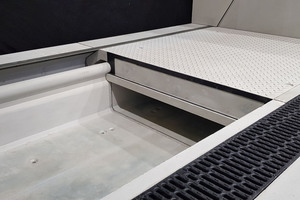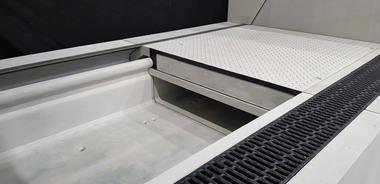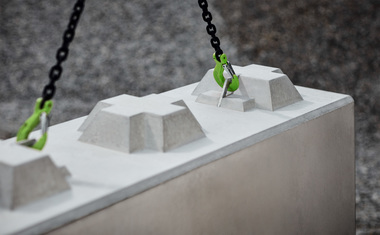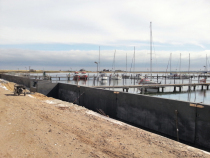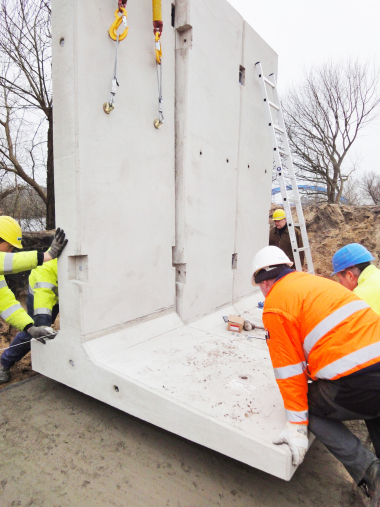Development of an effective automatic flood barrier
Current climate change scenarios assume not only a temperature increase but also a growing number of torrential rain events. Automatic flood protection systems installed at the entrances and underground car park access points of buildings, as well as on embankments located adjacent to them, in order to prevent the ingress of water will thus become increasingly important to avoid cases of flood-induced damage.
An innovative flood protection system consisting of precast concrete sandwich elements was developed at TU Kaiserslautern. Its main benefit is that it is fully automatic and exceedingly robust. Its optimized design and material use completely eliminated the need for mechanical parts; its automatic closure relies on the buoyancy of the flood barrier alone. This system comprises the self-closing flood barrier featuring filigree covers made from micro-reinforced ultra-high performance concrete (UHPC) and a Styrodur core to which a molded concrete hinge is attached at the transition to the adapter part of the trough-shaped deposit chamber. The adapter element carries the flood barrier both in its rest and operational state whilst ensuring the buoyancy required during a torrential rain event. As part of the Brigaid (Horizon 2020) EU research project, a large number of tests were carried out in order to optimize the entire system, including different reinforcement types using micro-reinforcement as well as mesh and steel fibers, so as to streamline the precast element production process. A fine-grained, Nanodur-based UHPC with optimized consistency was designed for being mixed with fibers without sedimentation. On this basis, three true-to-scale, 0.2 m wide barrier prototypes were produced with the respective reinforcement design and tested in both the rest and the operational state. In these tests, the reinforcement design with 2 vol% of steel fibers proved to be the most appropriate in terms of its production as well as load-bearing and deformation behavior. This is why this type was used for producing a large, fully functional, 3 m wide demonstrator, which was then installed at the campus of TU Kaiserslautern. Practically feasible solutions were found for the complex challenges associated with the required formwork. The experimental tests performed to date appear to be very promising since they confirm the functionality of the self-closing flood barrier system both in its rest state under vehicle load and in its operational state under water pressure.

